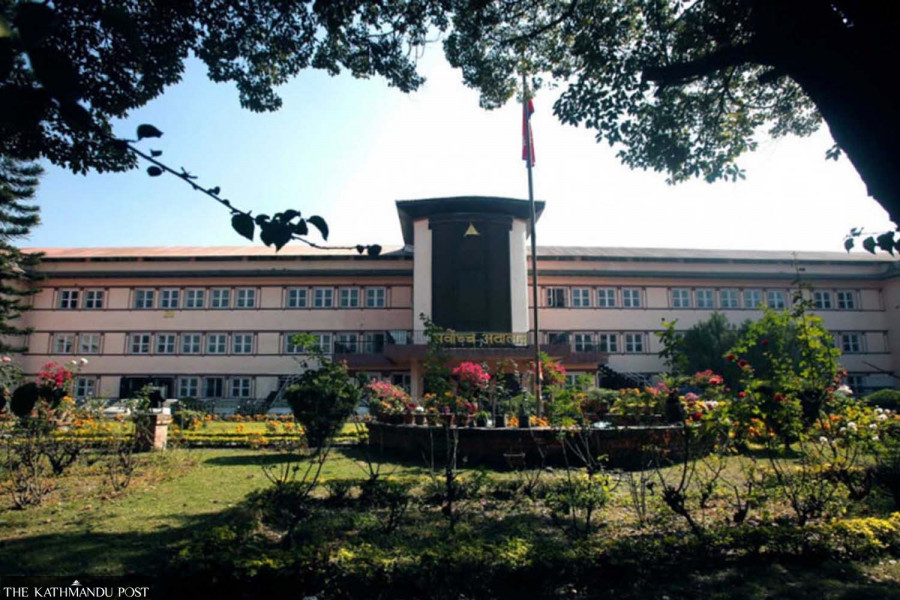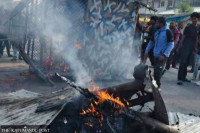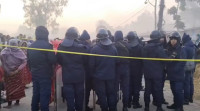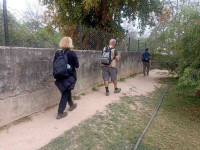National
Short of justices, Supreme Court’s work further slows
High courts have a 59.33 percent case clearance rate, district courts come second at 54.56 percent, while the apex court is last at 17 percent.
Binod Ghimire
The output of the Supreme Court that was earlier limited owing to months-long protests against the then Chief Justice Cholendra Shumsher Rana, who has since retired, hasn’t improved much due to a shortage of justices.
Five of the 21 justice positions including that of chief justice are vacant at the Supreme Court, which has been led by an acting chief justice for around a year. “When a quarter of justice positions are vacant, the hearing of cases is naturally affected. That is why we constitute fewer benches and the number of cases that ‘cannot be heard’ on a particular day has increased,” Devendra Adhikari, information officer at the Supreme Court, told the Post.
For instance, as many as 313 cases were listed for hearings on Wednesday. However, 190 cases, or over 60 percent, couldn’t be heard as there are fewer justices and a huge backlog of cases. As per the court’s report for the fiscal year 2021-22, the Supreme Court, which also has the responsibility of supervising subordinate courts, was the worst performer among the three tiers of justice (courts). The high courts performed the best, with a 59.33 percent case clearance rate. The district courts came second (54.56 percent) while the apex court was last (17 percent).
Of the total 33,466 cases including the backlog from previous years, the court could clear just 5,689 cases in a year, which is way less than its own performance in the fiscal year 2020-21. It had as many as 35,981 cases in docket in 2020-21 including 24,180 from the previous years. The court could clear 31.2o percent of the cases, with a backlog of 24,756 for the next year.
Adhikari said the sluggish clearance of cases due to the Judicial Council’s failure to appoint judges on time has added to the work of an already overburdened court.
As many as six justices retired on different dates in 2022. However, just one justice—Til Prasad Shrestha—was appointed in March last year as a replacement to retired justice Purusottam Bhandari. The court is yet to get replacements of former acting Chief Justice Deepak Kumar Kari and justices Meera Khadka, Tej Kumar KC and Bom Kumar Shrestha—all of whom retired last year. Similarly, the chief justice position is also lying vacant since the retirement of Cholendra Shumsher Rana on December 13.
It is not that attempts were not made to fill the vacant positions. On September 6, Judicial Council recommended two high court chief judges—Neeta Gautam-Dixit and Binod Sharma—and an advocate DN Parajuli, who is also an associate professor of law and campus chief at Nepal Law Campus, for appointment as Supreme Court justices.
Gautam-Dixit was chief judge of the Tulsipur High Court while Sharma led the Janakpur High Court. However, they couldn’t be appointed because the term of the House of Representatives expired before their parliamentary hearings could take place. Article 292 of the Constitution of Nepal makes parliamentary hearings mandatory for nominees to constitutional bodies.
While the Constitutional Council led by the prime minister picks the chief justice, it is the Judicial Council that recommends the justices for the top court and judges in the lower courts.
Led by chief justice, the five-member Judicial Council has the minister for law and justice, the senior-most justice of the Supreme Court, a jurist appointed by the President on the government’s recommendation, and a senior advocate recommended by the Nepal Bar Association as its members.
Officials at the Parliament Secretariat said the hearing process for the three justices will commence after the formation of a new Parliamentary Hearings Committee. “The previous committee had already solicited complaints from the public against the nominees. The new committee will take the remaining task forward,” Laxmi Prasad Gautam, joint secretary of law at the secretariat, told the Post.
The first meeting of the lower house commences on January 9. However, the formation of the hearings committee is unlikely before the election of new Speaker and deputy Speaker which needs to be done within 15 days of the first meeting. It is, therefore, unlikely that they would get an appointment soon. Two positions of the justices will still remain vacant even after the appointment of the three justices.
Similarly, the Judicial Council, the body responsible for nominating justices, will not get full shape until the country gets a law minister. Prime Minister Pushpa Kamal Dahal wants to expand his Cabinet only after getting the vote of trust scheduled for Tuesday. However, the council’s meeting is unlikely to be held immediately, even if the Cabinet is expanded next week, because Bishwombhar Prasad Shrestha, the senior-most justice who is a member of the council, is on leave till January 17.
Nripa Dhwaj Niroula, the chief judge of the Dipayal High Court, and Dilli Raj Acharya, who ranks second in seniority among High Court judges, are the contenders for the vacant Supreme Court positions. However, there is also a practice of appointing justices from among senior advocates.
“In addition to five justices at the Supreme Court, 30 high court judges positions and six of chief judges are lying vacant,” Man Bahadur Karki, spokesperson at the Judicial Council, told the Post. “We can only wait until the council meets to make recommendations.”




 14.12°C Kathmandu
14.12°C Kathmandu













%20(1).jpg&w=300&height=200)

